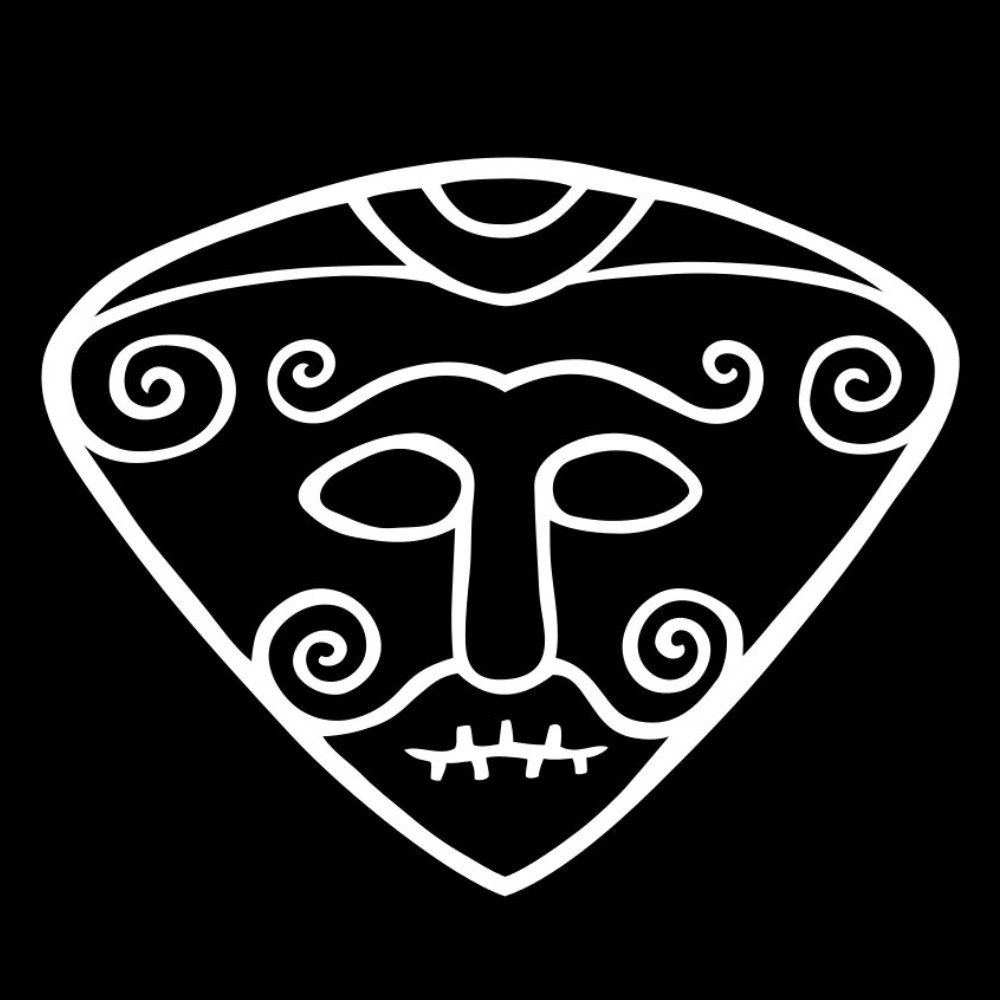Not OC to me, but I thought it was very much worth sharing.
Just been there three weeks ago when visiting Norway. It has the names of resistance fighters that were killed by the nazis engraved on the side.
Some background, explaining why this brutalist sculpture was made quite recently, and why it matters:
Resistance in Norway during the war:
During the war in Norway, the organized resistance against the Nazis generally took one of three forms.
One was organized in Britain. Norwegians would generally flee to Sweden, make their way from Sweden to the UK, receive training in the UK, and come back to Norway to do military missions. The heavy water sabotage is the most famous achievement of Norwegians together with British intelligence, but they did a lot of operations. Milorg was a central group here. Keep in mind that organized in Britain does not necessarily mean British, as our legitimate government was in exile in Britain at the time. Milorg had ties both to the Norwegian government and to the British army.
The other was the Norwegian merchant sailors: More than 30 000 Norwegian sailors (some sources say around 100 000) contributed to the Allied effort transporting military supplies along with civilian goods, making them the target of frequent attacks by the Germans. When coastal cities in the US were asked to keep the lights off so that the silhouettes of ships would not be visible, that was largely for Norwegian merchant ships. Both Churchill and Roosevelt highlighted the importance of the merchant sailors after the war, and already in 1942 the British admiral Gerald Charles Dickens gave the following quote:
Had it not been for the Norwegian merchant fleet, we might as well have asked Hitler for his terms.
Point being, there were many of them, they were incredibly important for the war effort, and they were operating as civilians. Many of them had communist ties.
The third strand was the Communist resistance. Important actors in this group was our veterans from the Spanish civil war: People who had gone to Spain to fight fascism there, came back to Norway with combat experience, and continued the battle at home. The most famous group in this regard is the Osvald group, to whom this sculpture is dedicated. There were more than 200 members of the Osvald group, and of course not all had combat experience from Spain: It also featured more regular people, for example police officers working actively against the Nazi regime from the inside. The Osvald group was aligned with the Soviet union, and wanted Norway to become communist after the war.
After the war:
Once the dust settled, the Labour party took hold in Norway, and we were under socialist rule for decades. However, we were aligned with the US, not with the Soviets. While our relationship to the Soviet Union was at times relatively good, we were generally suspicious of Communists, and illegal surveillance of Communists happened during the Labour rule.
For our war veterans, this meant a whole lot. We were praising Milorg almost constantly. The Osvald group, on the other side, was more or less forgotten: As they had fought for Communism, not for the Norwegian king and government, their contribution didn’t fit our narrative so well. So we largely ignored it. It wasn’t before 2013 that the Norwegian minister of defence had the guts to officially honour eight members of the Osvald group, of the 17 that were still alive.
Things were not much better for the merchant sailors. Their contribution was largely ignored for two reasons. The first, at least by my understanding, is that there were some Communist ties that the government was not too enthusiastic about. The second, possibly more important reason, is that there were too many of them. If we were to recognize their war effort this would mean recognizing them as soldiers rather than as civilians, which would be a slippery slope pay them soldiers’ pensions. Keep in mind that we didn’t find oil before the 70s; we were not a rich country in the postwar era.
So what about this sculpture, anyway
This statue was erected in 2015, specifically in honour of the Osvald group. Four surviving members of the Osvald group made it to the unveiling.
It’s fair to say art critics didn’t dig it. But that was never the point. The point was that we were finally willing to recognize the contribution of the communist resistance, and to do it explicitly: In a brutalst fashion, similar to design philosophies in the Soviet union at the time they were fighting as allies of the USSR, and with no uncertain form language. The hammer of communism is beating the shit out of that swastika.
There are two plaques. One lists the fallen from the Osvald group; the other the fallen workers of the national railways. The statue is placed outside of Oslo East Station, where the group conducted it’s first act of resistance in 1942.
I am still waiting for the merchant sailors (krigsseilerne) to be properly honoured.
Reminded me of this amazing statue in Treptower Park, Berlin, which has a graveyard with fighters from the Red Army dead in the battles against the fascist beasts of nazism. I love it and it is pretty beautiful, and the detail of the sword in the swastika is amazing
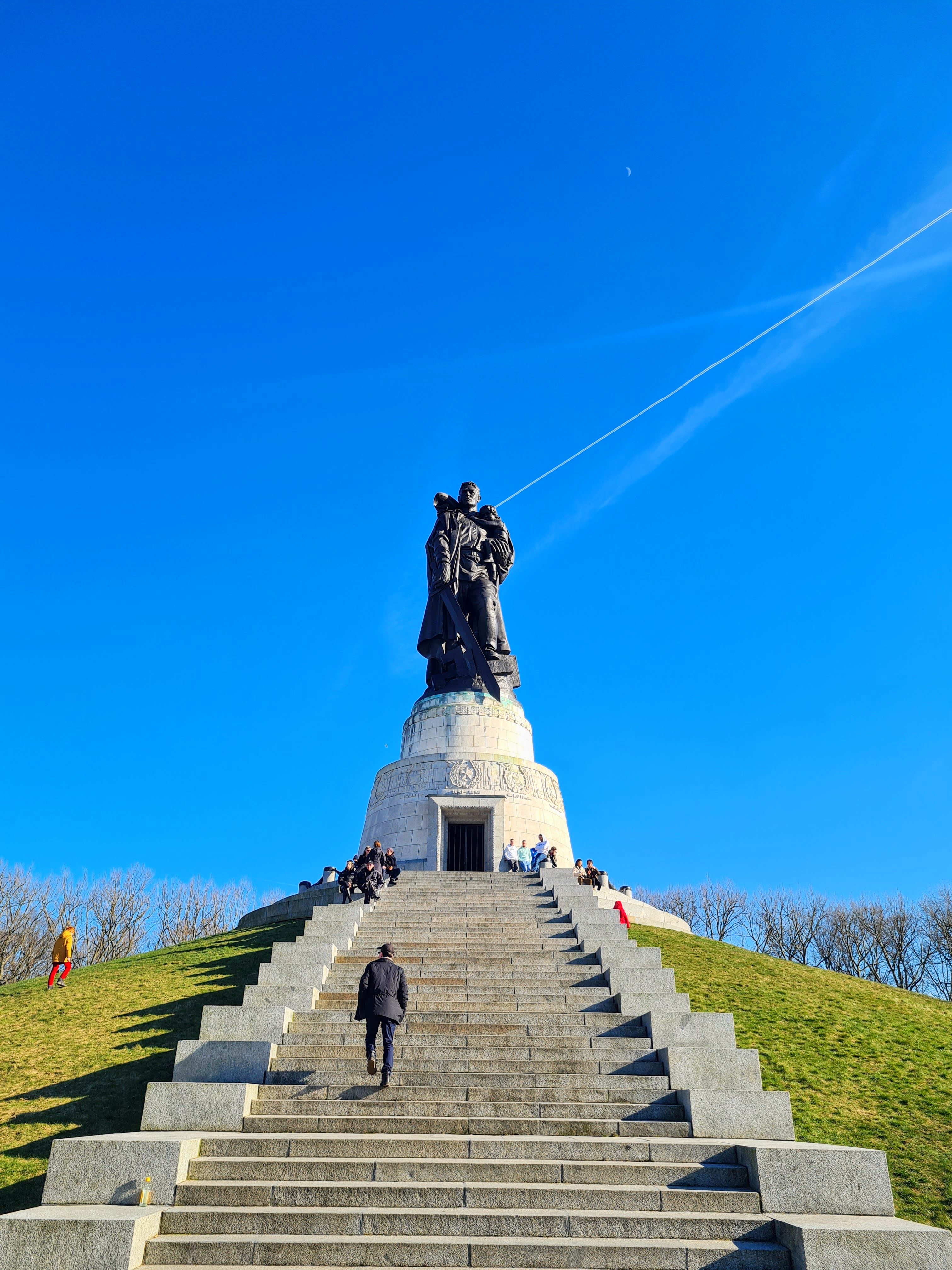
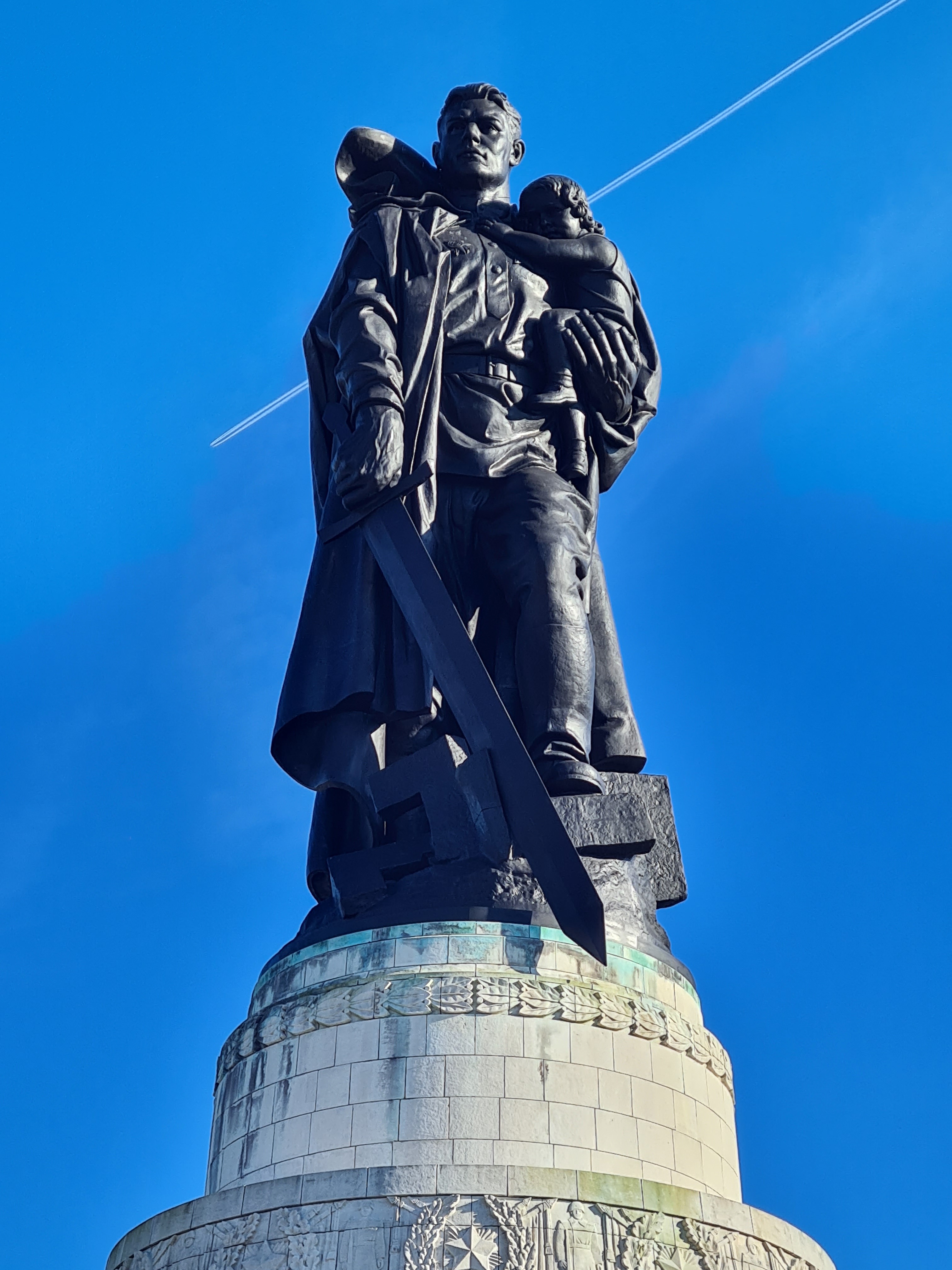
I quite like it too, although climbing up all of those stairs to see what’s inside might not be worth the effort. What’s inside?
climbing up all of those stairs
You’re literally a flying squid! 🤦♂️
It is closed, but there are some paints and texts as tribute to those who fought in the war. I don’t remember very well (memory broken by ADHD), but is something like that. I’m planning to pay another visit there soon and if I remember I’ll take some pictures as well
This is my favourite places. I used to live in Treptower for a few months and would go there pretty frequently.
It’s a war cemetery, marking the final resting place of more than 7000 Red Army soldiers who fell in the Battle of Berlin. More than 80 000 Soviet soldiers fell in the battle in total.
The monument is much bigger than this statue. in the middle of the park of the monument there are these gigantic stone flags, hanging to each side. Directly across from the soldier is a large, but significantly smaller, statue of a woman kneeling in respect for the soldier. Then there’s all these huge square stones depicting scenes from the war, with quotes by Stalin written in gold in Russian and German on the side.
What I love about it, in addition to the symmetry and the somewhat over the top nature of it all, is that it’s positioned exactly where two traumatic pasts meet. It is in part a sacred space; in part a painful memory. Some will criticize it for glorifying Stalin and the GDR; others have labelled it the “Tomb of the Unknown Rapist”, in reference to the not always excellent conduct of the Red Army. But despite everything—and there is a lot—one can’t help but feel an immense gratitude to the 7 000 lying there. It’s a place where history and ideas collide, and one is struck by the complexity maybe more than the beauty.
Anxiety blocked me from doing that before, but here are more pictures with the other things cleverly pointed by you, that indeed make everything even prettier
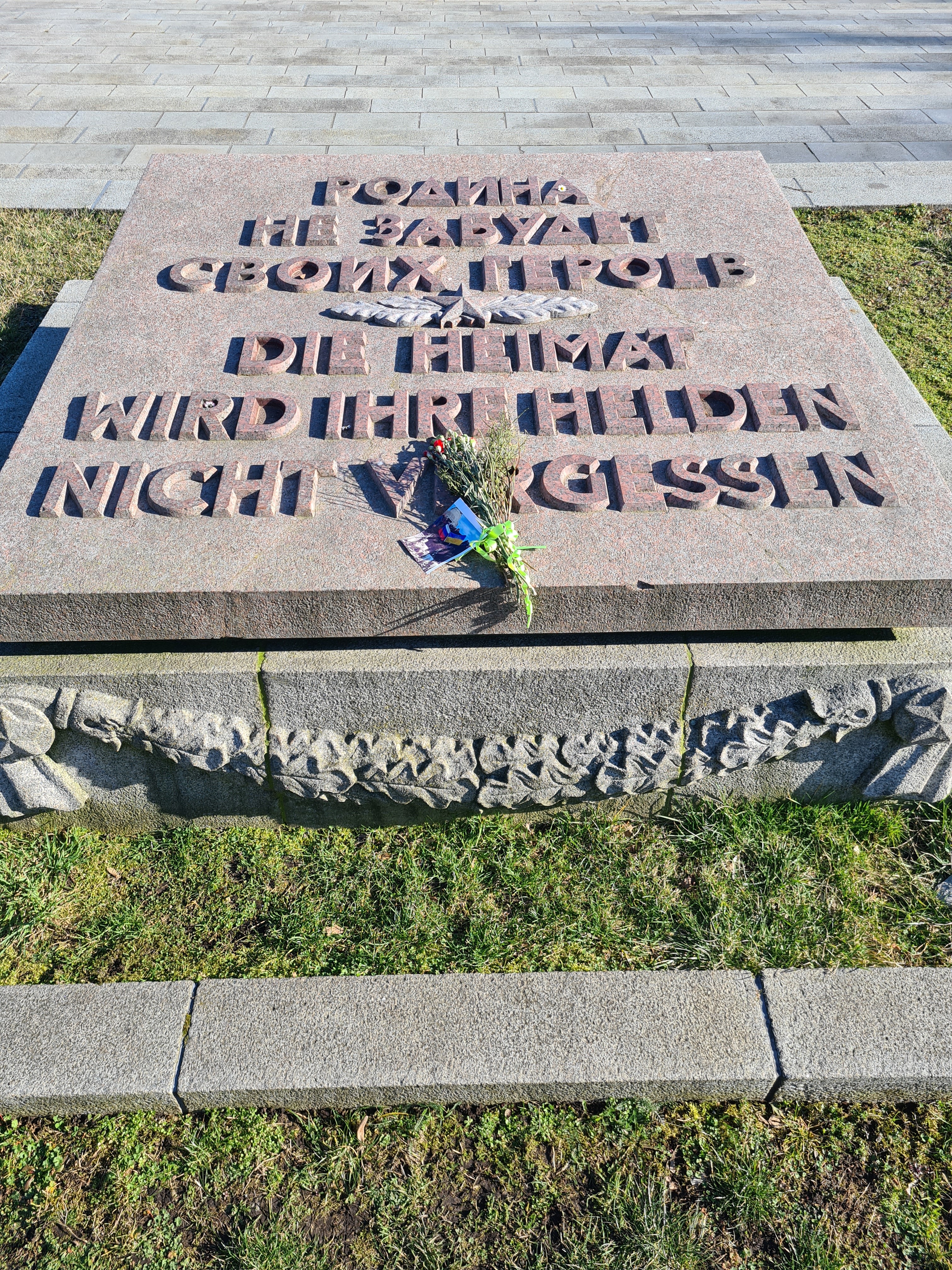
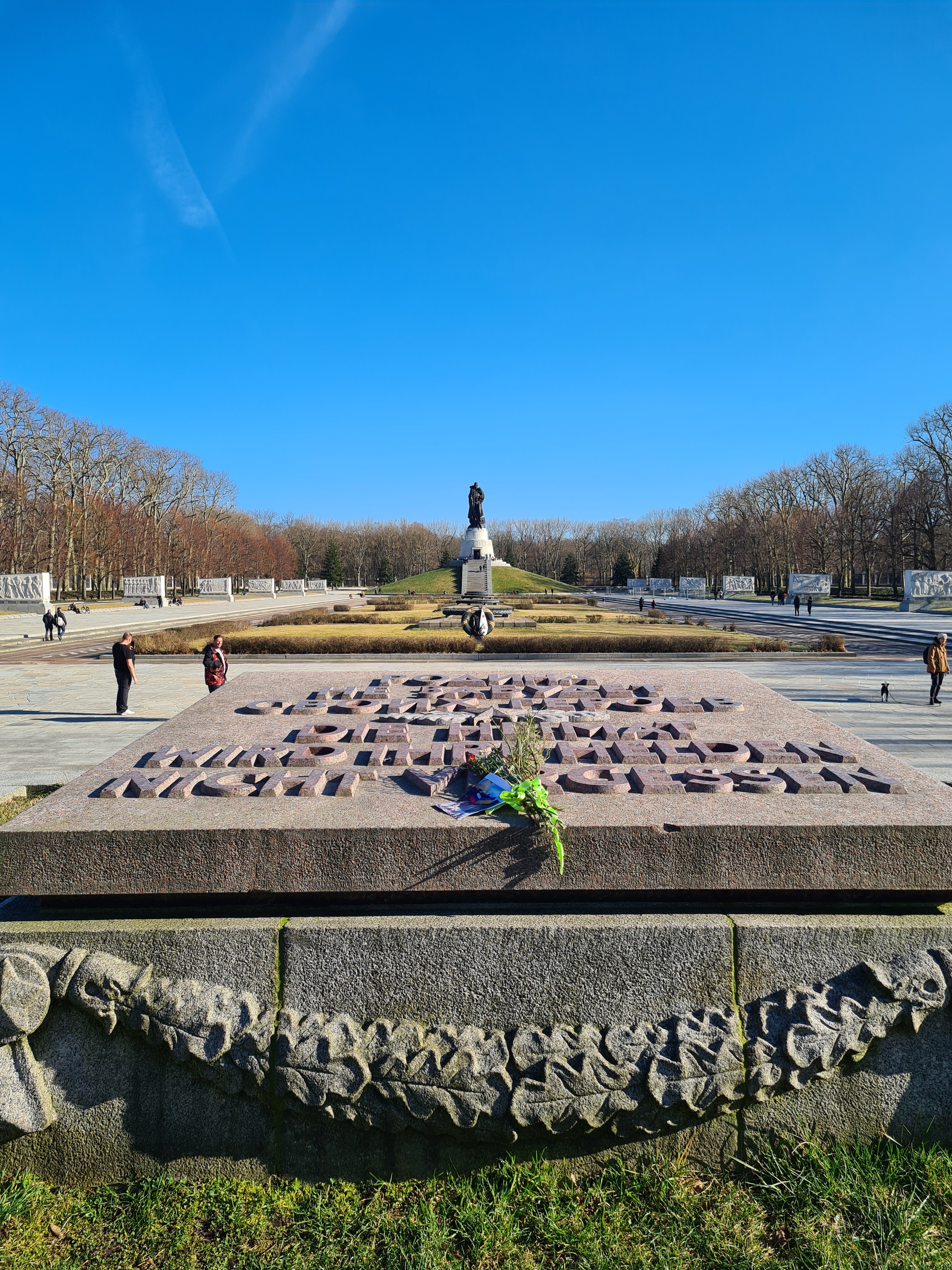
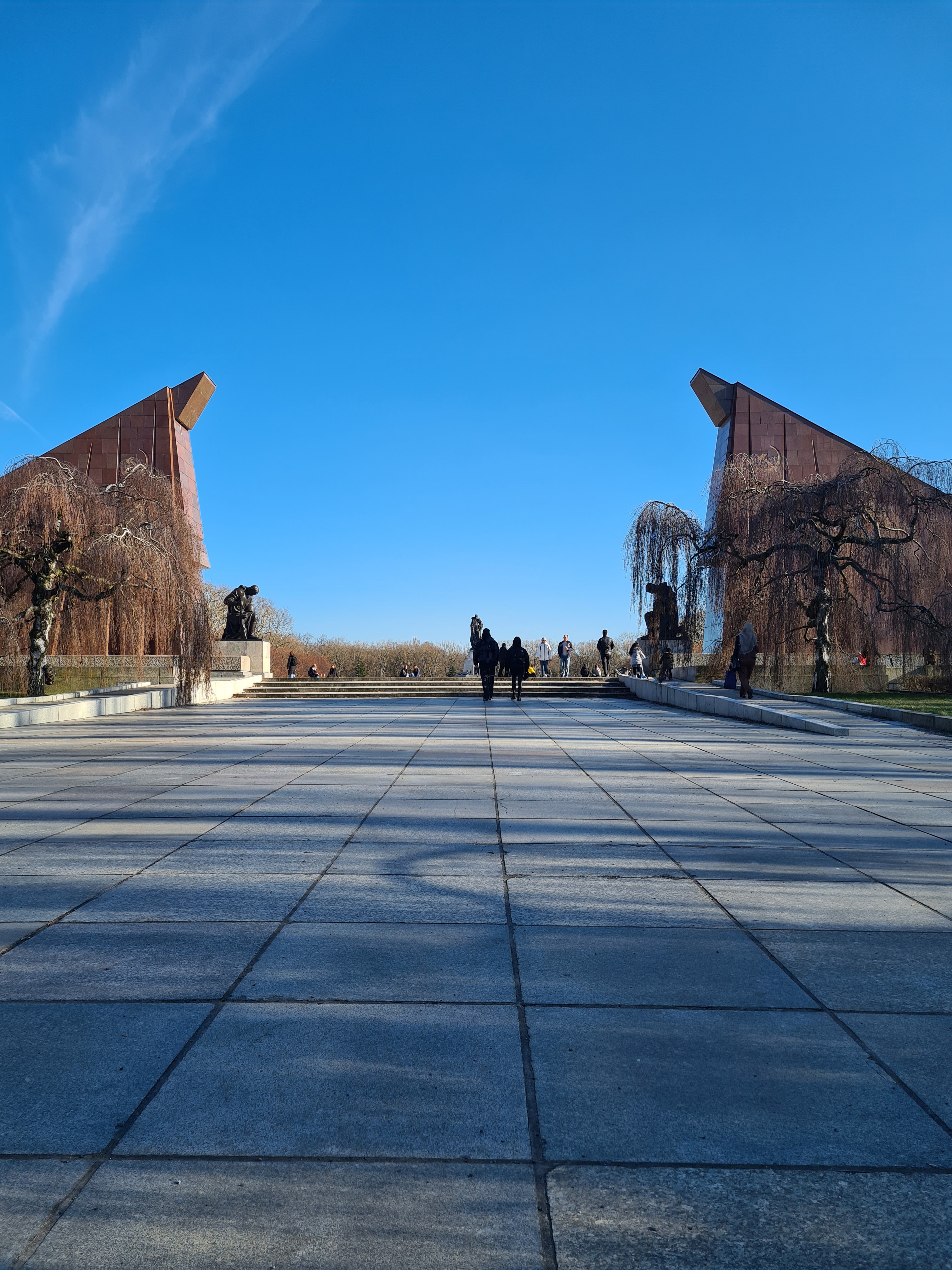
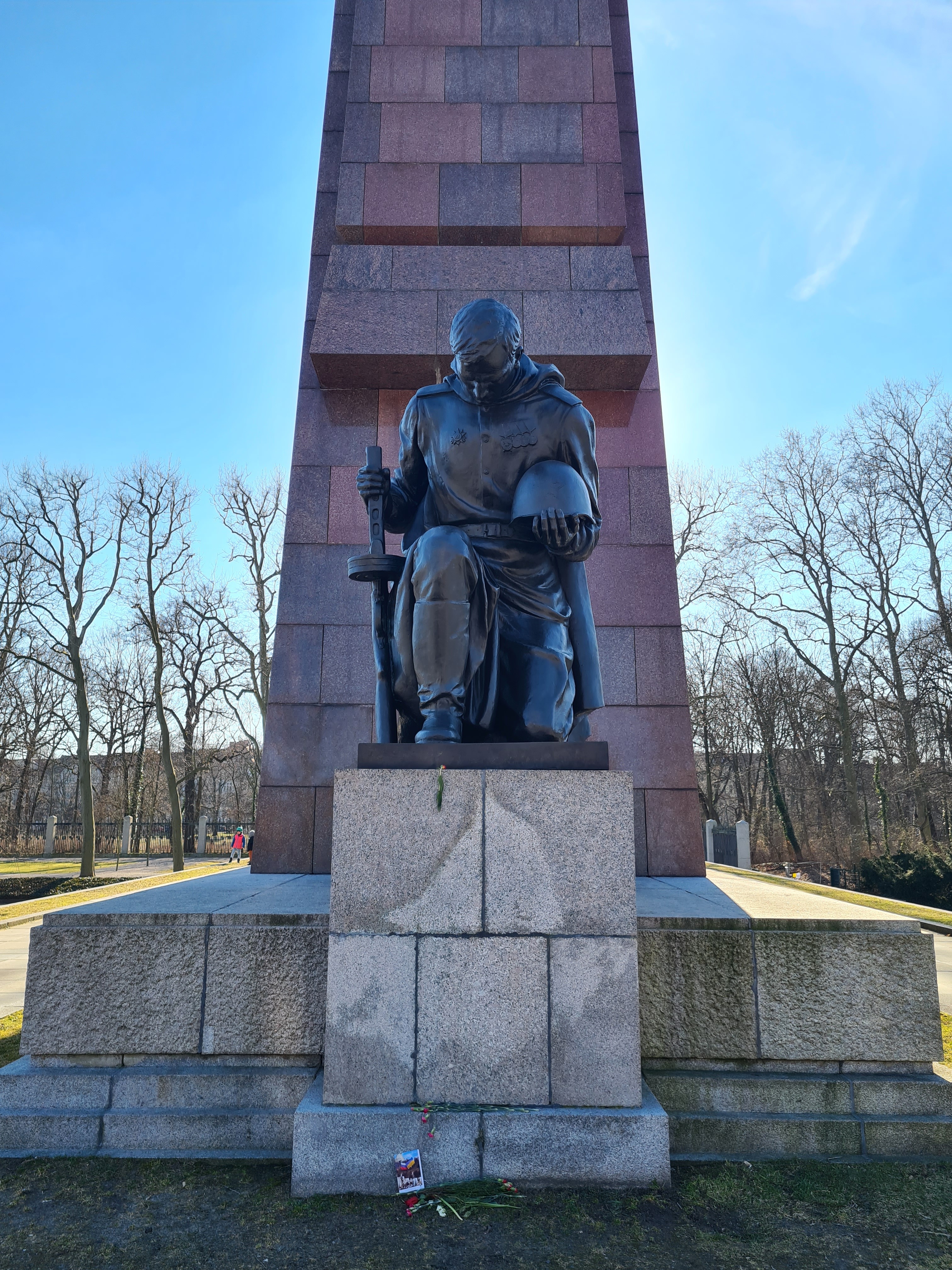
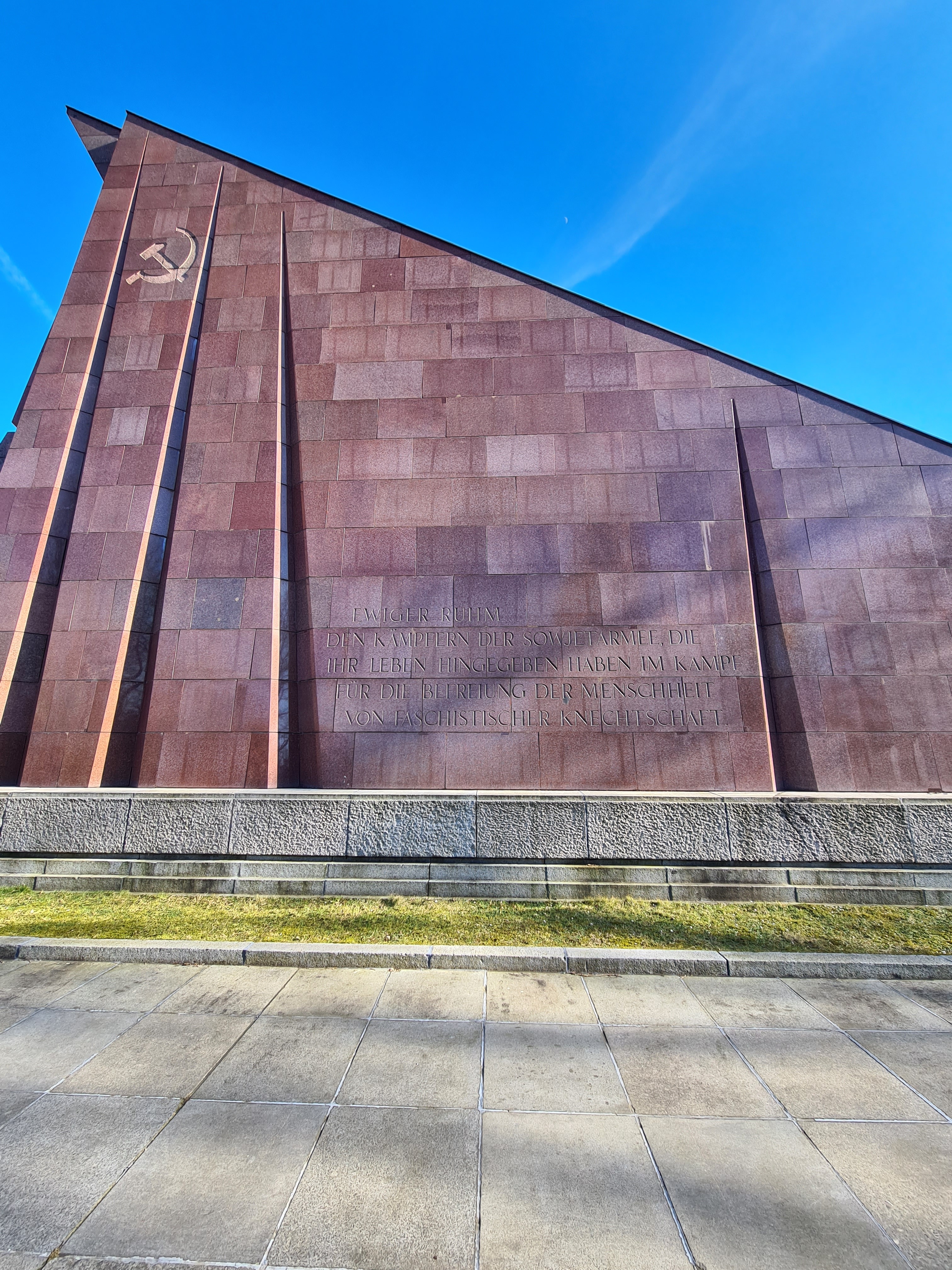
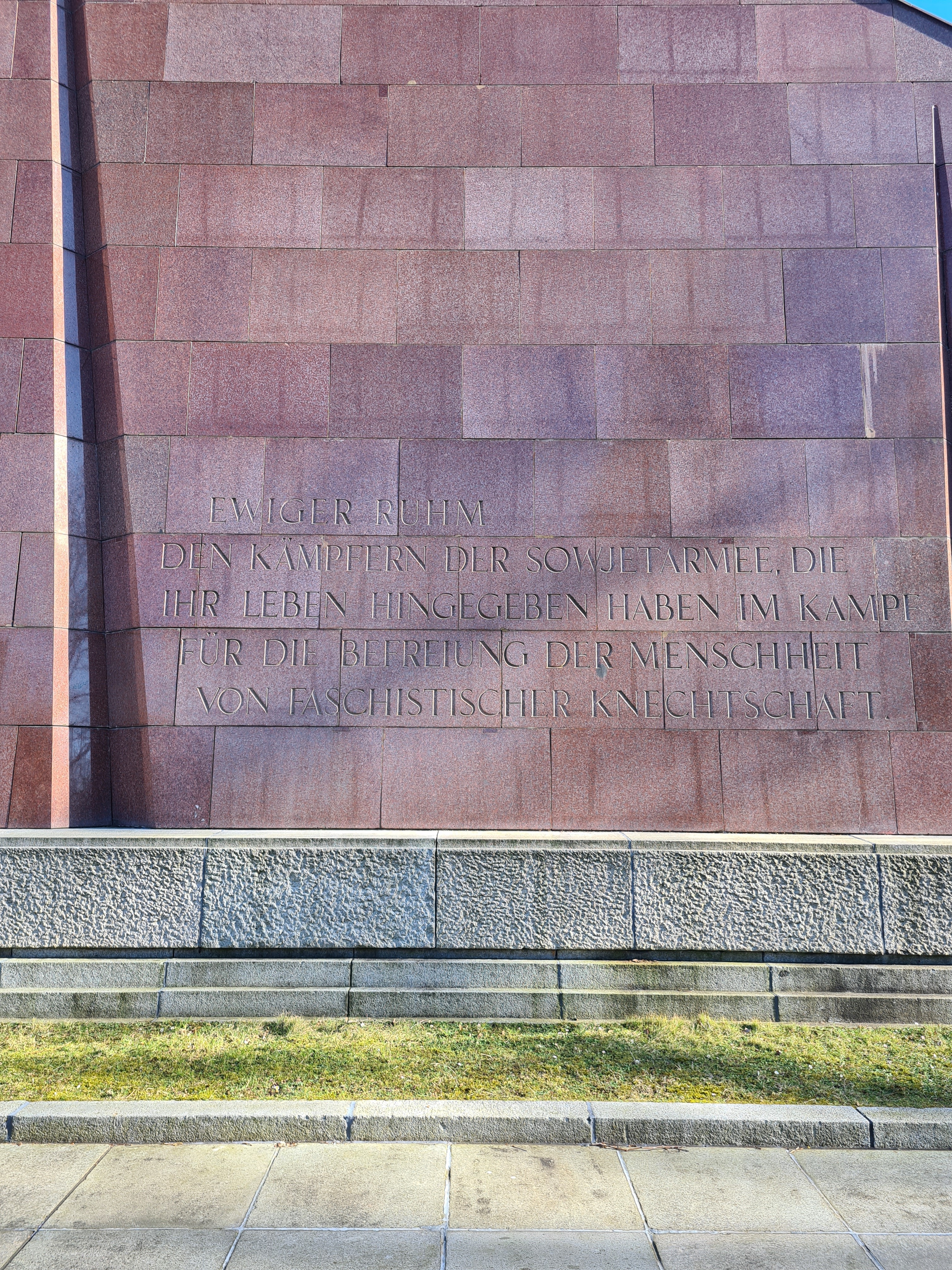
Oki, so pictures didn’t load :( hahahaha
They did! Thank you so much - I tried to Google, but all the pictures were awful. Love yours!
Subtle.
Nazis should not be dealt with subtly.
I’m not a fan. I don’t like looking at swastikas in any context. Sometimes it’s necessary as part of learning about history, but I would prefer not to see one twice a day if that was the metro station I used to get to work.
Also IMO it has little artistic worth; it’s not much more sophisticated than putting up a portrait of Hitler and labeling it “Bad Guy” would be. Something like this takes fundamentally the same idea (destroy the symbol of a hated enemy) but expresses it in a far more aesthetically interesting way.



